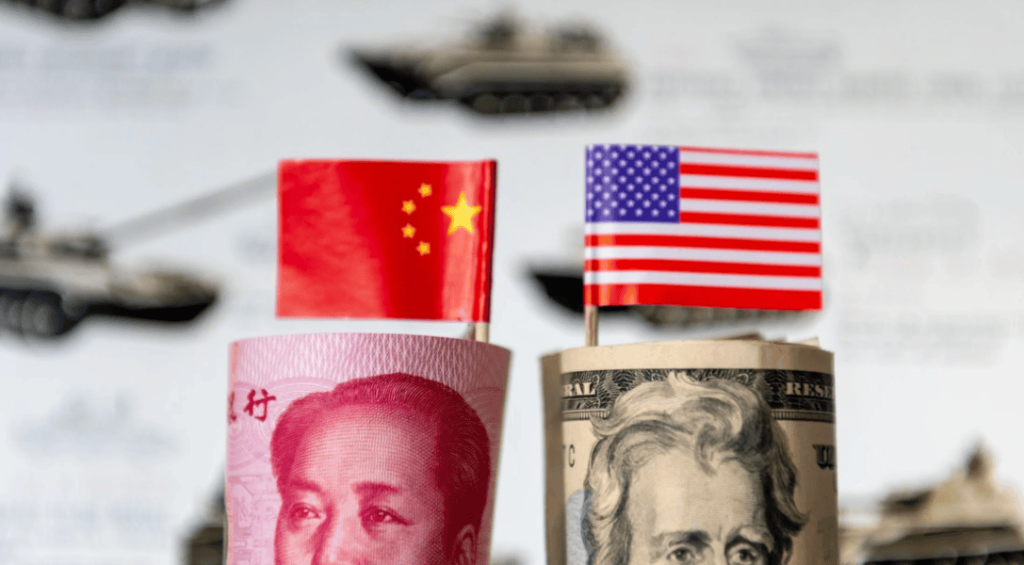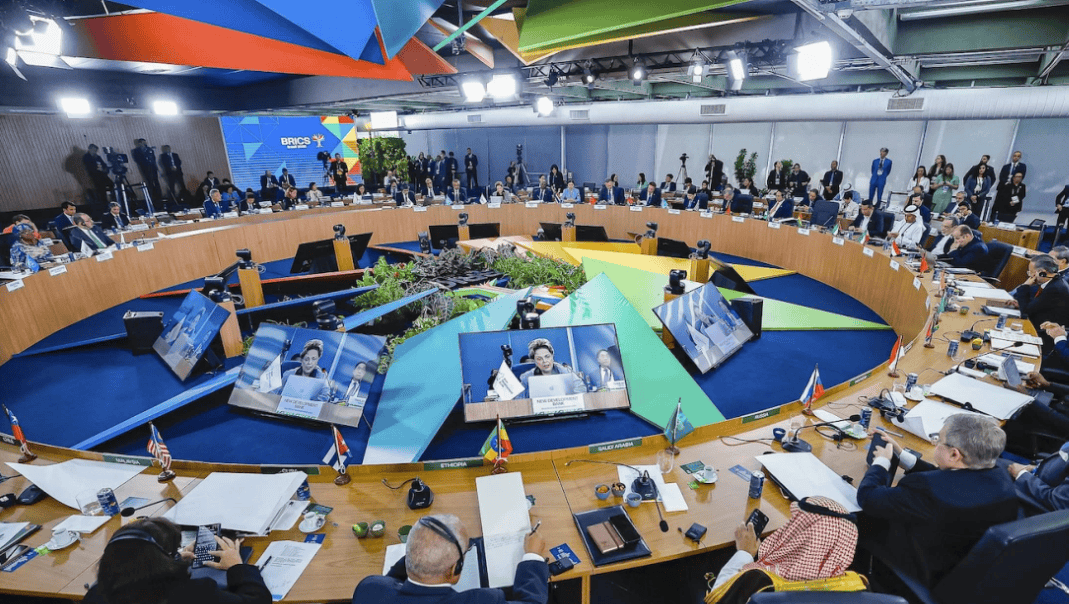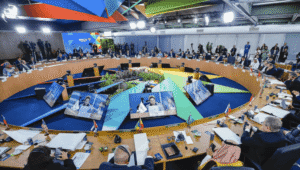Estimates of China’s military spending relative to the US vary widely from around one quarter of US spending to near parity. This column argues that the use of appropriate relative prices and unbiased economic measurement techniques greatly reduces the range of reasonable estimates. Given current data, China’s military expenditure in PPP terms is estimated to be $541 billion, or 59% of US spending, and its equipment levels are only 42% of US levels. Comparing trends over time shows that the US has matched China in recent years, albeit at the cost of a much higher defence burden.
The US views China’s military rise as a strategic challenge, prompting ‘decoupling’, new defence alliances, and calls for greater defence spending (RAND 2024, Freund et al. 2023, Bosone et al. 2024). However, claims over the size of China’s real military spending relative to the US are contested and range widely from around one quarter of US spending to near parity (The Wall Street Journal 2023).
In large part these differing views result from the difficulty of making meaningful dollar comparisons. The CIA and US Department of Defense (DoD) once conducted purchasing power parity (PPP) comparisons to assess Soviet military spending, but these efforts ended after the Cold War (Firth and Noren 1998). This appears to have left an intelligence gap as China’s military capabilities expanded.
Against this background, in this column I show that:
- a reasonable purchasing power estimate of China’s military spending is $541 billion, which is 83% larger than the current market exchange rate value and equates to 59% of US military spending;
- China’s defence sector remains more reliant on personnel than that of the US, but it has substantially modernised as measured by rapid growth in equipment per person; and
- while China’s military spending has grown rapidly, contrary to perceptions, the US has kept pace in recent years.
I also discuss why studies differ so much in their estimates of China’s defence spending and underscore the inherent measurement uncertainty in such comparisons.
Adjusting for prices
Table 1 provides a PPP comparison of China’s military spending with that of the US. According to the Stockholm International Peace Research Institute (SIPRI) China’s military spending in 2023 was 2.096 trillion yuan. At market exchange rates this converts to $296 billion, much smaller than the US budget of $916 billion.
Market exchange rates, however, only tell us what China’s budget would procure if it was spent in the US.To get an overall PPP estimate, that factors in local costs, we can divide aggregate spending into three broad categories using self-reported UN data (Column 2).Each component is then converted to dollar equivalents using an appropriate PPP price.
Column 3 thus reports the World Bank PPP prices for “Machinery and Equipment”, which I use as an indicator of relative military equipment prices.Relative personnel unit costs are calculated from personnel expenditure data and the number of skill-adjusted personnel in each country. For operations spending, I simply use the average price level as indicated by the GDP–PPP exchange rate.
Although the data lack fidelity, significant price differences across these categories are evident. For example, China’s relative military personnel costs, at 1.9 yuan per dollar, are very low compared to the market exchange rate of 7.08 yuan per dollar, while equipment prices are slightly higher.
Table 1 Chinese and US military spending compared


The dollar value of China’s military spending is then given in Column 4 and totals $609 billion, or 67% of US actual spending of $916 billion.
Note, however, that the same PPP exchange rates imply yuan values for US spending that add to ¥3,995 billion (Column 5). This implies that China’s actual spending is only 52% of that of the US – the equivalent of $481 billion.
Thus, we have a $129 billion gap ($609 versus $481 billion) between two equally valid estimates using the same data.
The first approach is a Laspeyres quantity index, while the second is a Paasche index. The gap is a reflection of substitution bias, which occurs when quantities are combined using prices from different markets.
Despite the considerable attention given to this issue in Cold War analyses of Soviet spending, nearly all current studies on China’s military spending have used a Laspeyres index, and so suffer from substitution bias.
To mitigate substitution bias, we can use a Fisher index, which is simply a geometric average of the Paasche and Laspeyres values (Robertson 2024).This puts China’s military spending at 59% of US spending, or $541 billion.
Figure 1 compares this with market exchange rate estimates, along with an indication of the Paasche-Laspeyres spread. The PPP value is 83% higher than the market exchange rate value of $296 billion and implies a military PPP exchange rate of 3.87 yuan per dollar – much lower than the market exchange rate of 7.08, and quite similar to GDP–PPP.
Figure 1 Military spending estimates


Applying this method across time then shows how China’s military spending has evolved relative to the US (Figure 2).China caught up rapidly after 2010 when military spending increased from under 40% of the US to around 60% by 2015.
Figure 2 China’s military spending as a fraction of the US, 2000-23 (SIPRI definition)


Nevertheless, the gap has been approximately constant in recent years as China’s economic growth has slowed. Hence, China is not currently outpacing the US, but the US is spending twice as much of its GDP to maintain its lead.
Modernisation
Differences in the composition of military spending will also affect assessments of China’s relative capabilities, so it is also important to look beyond this headline number.
Table 1 also shows that China’s real, skill-adjusted, personnel inputs are 1.38 times larger than the those of the USA ($327 versus $238 billion), reflecting its larger personnel strength.However, China’s aggregate military equipment inputs are only 42% of those of the US ($91 versus $219 billion). Thus, despite the significant growth, China’s military remains much reliant on personnel than the US.
Figure 3 shows how this composition has changed as China’s military spending has grown. Here, overall military spending is measured in constant 2023 PPP dollars and the share of each spending category reflects the real input quantities in China relative to the US.
Figure 3 Chinese and US military spending ($billion PPP)


The figure highlights the rapid growth of operations and equipment spending in China with equipment spending at only 10% of the in 2000, but rising to over 40%. Real military equipment spending in China thus grew at 9.7% per annum compared to overall military spending of 5.6% per annum. Figure 3 also shows the decline in US spending after 2010 – mainly due to the drawdown of forces in Iraq and Afghanistan. Thus, cycles in US spending explain some of the apparent rapid catch-up in Figure 2.
Questionable assumptions
It is important to stress that there is enormous data uncertainty in these figures and reasonable alternative results are possible. Early studies on China, perhaps understandably, relied heavily on average GDP–PPP measures. Since then, studies have used civilian and government sector wage ratios, consumption price indices, and military salaries to estimate personnel PPP ratios, and market exchange rates have been used to measure equipment PPP.
However, some of these assumptions are less desirable than others. Specifically, using GDP–PPP likely overstates the dollar value of China’s equipment spending given the World Bank data on “Machinery and Equipment” prices discussed above.
Conversely, deflating personnel expenditure by a consumption price index understates China’s real military spending because it reflects consumption, not personnel strength, and Chinese personnel consume less per capita than their US counterparts.
Similarly, relying on specific salary scales to estimate personnel PPP can be misleading. For example, a sergeant in the PLA earns seven times the pay of an enlisted recruit, while in the US Army a sergeant only earns 30% more. Relying on sergeants’ salaries, as one study does, therefore likely inflates China’s relative personnel costs.
The impact of these relative price assumptions is substantial. Replacing Eaglan’s (2024) PPP value for equipment PPP and Fravel et al.’s (2024) value for personnel PPP in Table 1 gives estimates of China’s military spending ranging from $454 billion to $732 billion.
Further discrepancies also stem from differing definitions of military spending. These may be valid since there is no single definition of military spending and the intensity of para-military activity differs across countries. I use SIPRI and IISS data since it is transparent, objective and aims to ensure comparability across countries and consistency across time (Tian and Su 2021, Nouwens and Béraud-Sudreau 2020).
However, some studies have reported comparisons that include the US Department of Veterans Affairs budget as part of US defence spending. Such legacy payments make sense when comparing defence burdens but are misleading in the current context of comparing military capabilities (Hartung 2023, Fravel et al. 2024).
Conclusion
Measures of comparative military spending play a critical role in defence policy decisions. However, the lack of transparency in China’s defence budget creates uncertainty, sparking concern and speculation.
This column has shown that the use of appropriate relative prices and unbiased economic measurement techniques greatly reduces the range of reasonable estimates. Collecting detailed price and input data, akin to Cold War programmes, could further reduce this uncertainty and improve military spending comparisons.
Given the data we have, however, China’s military expenditure in PPP terms is estimated to be $541 billion, which is 83% larger than the market exchange rate value. This represents 59% of US military spending, but China’s equipment levels are only 42% of the US levels. Finally, comparing trends over time shows that, despite a period of rapid catch-up, the US has matched China in recent years, albeit at the cost of a much higher defence burden.
Source : VOXeu



































































